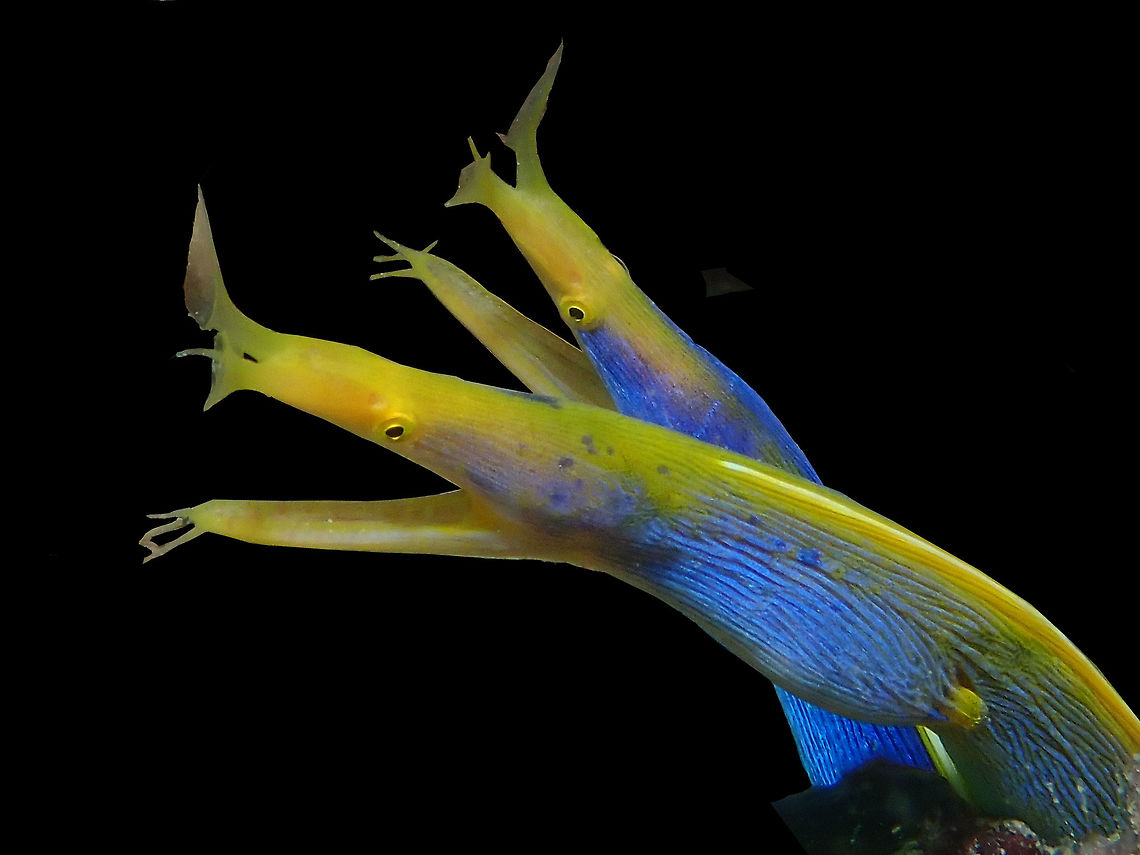 Promoted
Promoted
Couple in the making
A pair of Ribbon Eels - Rhinomuraena quaesita.
They have 3 phases :
- black/yellow during juvenile phase
- blue/yellow during male phase
- fully yellow during female phase
The picture shows a slightly bigger male slowly changing to female phase, with yellow colouration on the body.

The ribbon eel (Rhinomuraena quaesita) or Bernis eel, is a species of moray eel, the only member of the genus Rhinomuraena. The ribbon eel is found in lagoons and reefs in the Indo-Pacific ocean, ranging from East Africa to southern Japan, Australia and French Polynesia.
Similar species: Eels
By Albert Kang
All rights reserved
Uploaded Mar 2, 2019. Captured Feb 27, 2019 16:20.

comments (11)
The Ribbon eel (Rhinomuraena quaesita), a kind of moray eel, is commonly found in the reefs of the Indo-Pacific Ocean. They are unusual fish—misfits among morays. Juveniles are black with yellow fins, adult females are yellow, and adult males are primarily blue with yellow faces. Sounds straightforward, right? Well, it's not. For one thing, they are protandrous hermaphrodites, which means that all ribbon eels are born as juvenile males. But, an all-male population would be impossible to maintain as they would all die off within one generation. An "easy" solution to this conundrum is that as they mature, the male ribbon eels become females. All of them. So, ribbon eels are born male, and as they grow larger, they develop female reproductive organs and become entirely female. They will then lay eggs and die. They spend most of their lives as males, performing male tasks like fertilizing eggs, and very little time is spent as females. This sequential hermaphroditic behavior is likely beneficial because larger females have a size advantage in that they tend to reproduce more efficiently. Therefore, more time spent as growing males equals larger, more robust females. {Spotted in Malaysia by JungleDragon moderator, Albert Kang} #JungleDragon Posted 6 years ago